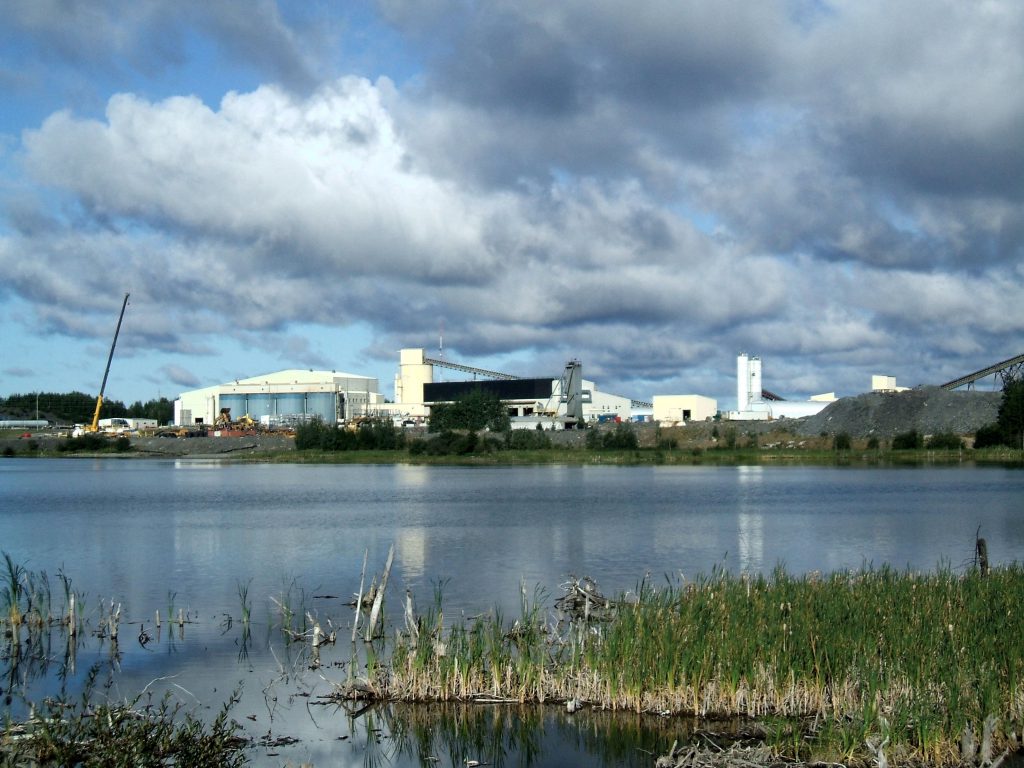Mining in northwestern Ontario contributes $1.5 billion in GDP

Newmont Musselwhite Mine
A new report, State of the Ontario Mining Sector, published by the Ontario Mining Association (OMA) in partnership with Ontario’s Ministry of Northern Development, Mines, Natural Resources and Forestry, details the economic contributions of the mining sector to Northwestern Ontario. In 2019, mining operations contributed approximately $2.4 billion in gross output, $600 million in wages, and 6,000 direct, indirect, and induced jobs to the Northwest regional economy. A total of 20% of the total GDP contributions made by mining to the provincial economy take place in the Northwestern Ontario.
“The opportunities for the mining industry in Northwestern Ontario have arguably never been greater than they are now. As the world emerges from the COVID-19 pandemic, faces increasing geopolitical uncertainty and as the race to halt climate change accelerates, the region is primed to continue contributing meaningful solutions, while capitalizing on rising global demand for green and critical minerals,” stated Chris Hodgson, President of the Ontario Mining Association.
Eight out of nine operating mines in Northwestern Ontario are gold mines, which are important sources of job creation and skill development opportunities, particularly for Indigenous communities in remote regions. The price of gold rose over 45% during the decade between 2010 and 2020, and the continued upward momentum is further stimulating the provincial economy.
Access to resources is a priority in today’s world as investors, customers and stakeholders increasingly demand ethically-sourced future-facing commodities, discovered and mined in an environmentally responsible manner.
“Ontario has enviable geology, including vast untapped critical mineral potential. However, good geology isn’t enough in a fiercely competitive global economy. We have an opportunity to strengthen Ontario’s competitiveness in supplying responsibly sourced critical minerals to domestic and international markets. The provincial government’s Critical Mineral Strategy will support these efforts to drive investment, talent and competitiveness in the Ontario mining industry. It starts with us, the responsible producers, and it starts in our backyard here in Ontario,” added Hodgson.
In partnership with the Government of Ontario and its Critical Mineral Strategy announcement, the OMA also released a Critical Mineral Analysis, to evaluate the critical minerals identified by the government of Ontario and analyze each mineral’s value chain, current production level, global trade patterns, price and demand outlooks, and the economic and strategic importance to the Ontario economy.
According to the provincial government, Ontario’s supply of critical minerals, processing capabilities and proximity to North American manufacturing hubs makes the province an ideal place for mineral exploration and investment.
“For generations, Ontario has been a global leader for mining,” said Greg Rickford, Minister of
Northern Development, Mines, Natural Resources and Forestry. “As the world shifts to a greener, techdriven economy, demand for made-in-Ontario minerals will grow exponentially. Ontario’s mining sector will continue to leverage our tremendous mineral wealth, mining expertise, environmental standards and robust Indigenous consultation practices to build more mines and create great jobs in Northwestern Ontario and across the province.“
The OMA report, State of the Ontario Mining Sector, examines 2019 – 2020 data from 41 active mining operations in the province that produce a diverse set of metals and minerals, including precious and base metals, and non-metallic minerals. The data demonstrate the current value of mining in Ontario and set benchmarks for areas of opportunity to futureproof the sector, solidify competitive advantages, and enhance the security and resilience of local supply chains.
In 2020, Ontario’s mining sector produced $10.7 billion worth of minerals, which accounted for 24% of Canada’s total production value: 56% was precious metals production and 42% base metals, 50% of the active mines in Ontario are gold mines, with gold production growing by nearly 50% from 2010 to 2019.
Ontario is the largest gold-producing province in Canada, which accounted for 75,000 kilograms or 41% of the production value across the country in 2019. Ontario mines also accounted for 77% of platinum group metal value produced, 37% of nickel, 23% of copper and 15.5% of cobalt, minerals critical to a low carbon future.
As of 2018, Ontario’s mining industry accounted for 4% of total GHG emissions in the province. This share is significantly lower than that of some comparable industries, such as iron and steel production (43%), petroleum refining (11%), other manufacturing industries (16%), chemicals production (8%), construction (8%) and cement production (5%).
